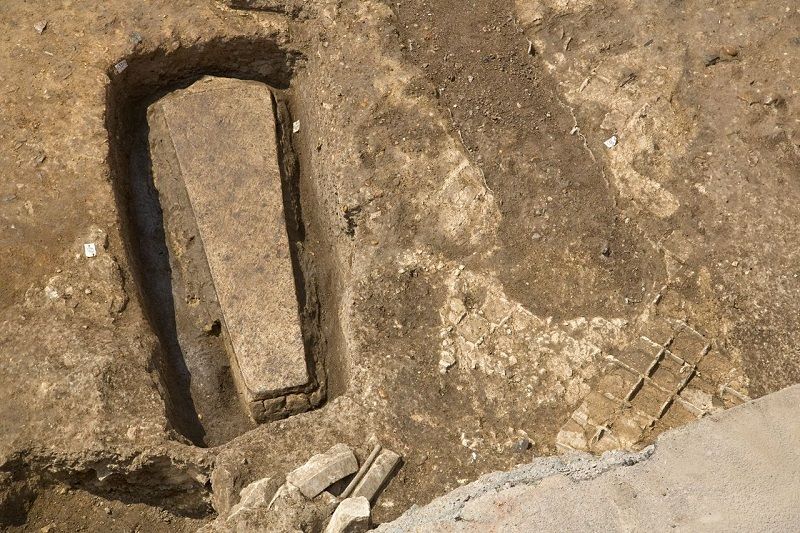Coffin-Within-a-Coffin Biggest Find of Richard III Dig

A month-long dig has come to an end at the site where King Richard III's grave was discovered under a parking lot in Leicester, England, last summer.
Archaeologists report today (Aug. 1) they've made some great finds over the past four weeks, including more skeletons, an intact piece of the lost monastery's floor and a mysterious coffin-within-a-coffin.
"This site keeps on giving — first King Richard III, then an intact medieval stone coffin which, when opened, contained a largely intact lead coffin," archaeologist Mathew Morris, site director, said in a statement. [See Images of the New Dig at Richard III's Grave]
Richard III was the last king of the House of York. He ruled England from 1483 until his death in 1485 during the last major battle against the House of Lancaster in the War of Roses. The fallen king received a hasty burial at the Grey Friars monastery in Leicester as his defeater, Henry Tudor, ascended to the throne. But the friary was destroyed in the 16th century during the Protestant Reformation, and its ruins — along with Richard's grave — became somewhat lost to history.
Setting out to find the king, archaeologists opened an excavation last summer beneath Leicester City Council parking lot. They soon uncovered the remains of Grey Friars and a battle-ravaged skeleton that was later confirmed through a DNA analysis to be that of Richard III.
There were other people buried at Grey Friars. The team of archaeologists from the University of Leicester Archaeological Services found a stone coffin during last year's dig and finally had the opportunity to investigate it further this year. But as Morris said, when they opened the heavy lid last week, they found yet another coffin inside with feet sticking out of the bottom. The researchers think the bones could belong to a medieval knight or a high-ranking friar buried a century before Richard, but it will be some time before they can determine how to open the lead coffin without damaging the remains.
"Lifting the lid on the stone coffin was a first for all of us on site," Morris said. "None of the team had ever excavated an intact stone coffin before, let alone a lead coffin as well, and for me it was as exciting as finding Richard III."
Sign up for the Live Science daily newsletter now
Get the world’s most fascinating discoveries delivered straight to your inbox.
Within the giant 82-by-55-foot (25 by 17 meters) new trench, researchers found two other skeletons underneath the church's choir, intact floor tiles, pottery, glass and pieces of metal artifacts.
They also mapped Richard's grave in 3D and discovered traces of another building to the south of the monastery during the dig that started in the beginning of July. The building's large buttressed walls hint that it could be the remains of an earlier church or chapel, according to the University of Leicester. Additionally, the team uncovered more remnants of a 17th-century garden said to hold a memorial to the medieval monarch.
Morris said it will take some time before the team can make sense of all the evidence they've found at Grey Friars. They still have to clean and catalogue all of the artifacts, as well as computerize all of their field notes, plans and photographs, he said.
But the preliminary findings have attracted wide attention nonetheless. Visitors flocked from as far away as New Zealand to watch the dig unfold on a viewing platform that was set up near the trench, according to Charlotte Barratt, the University of Leicester's Richard III outreach officer.
"There have been some interesting questions posed as well, such as 'How many arms did Richard III have?' from one of our younger visitors," Barratt said in a statement. "I began to notice that there were some regulars appearing on the platform as well, getting their daily update."
Though a permanent visitor center is being built at this humble burial site, Richard's remains will be reintered in a more kingly fashion. The Cathedral of Leicester recently unveiled its $1.5 million (£1 million) plan to rebury the monarch in a new raised tomb inside the church, with a week of celebrations leading up to the reinterment.
Follow Megan Gannon on Twitter and Google+. Follow us @livescience, Facebook & Google+. Original article on LiveScience.com.












